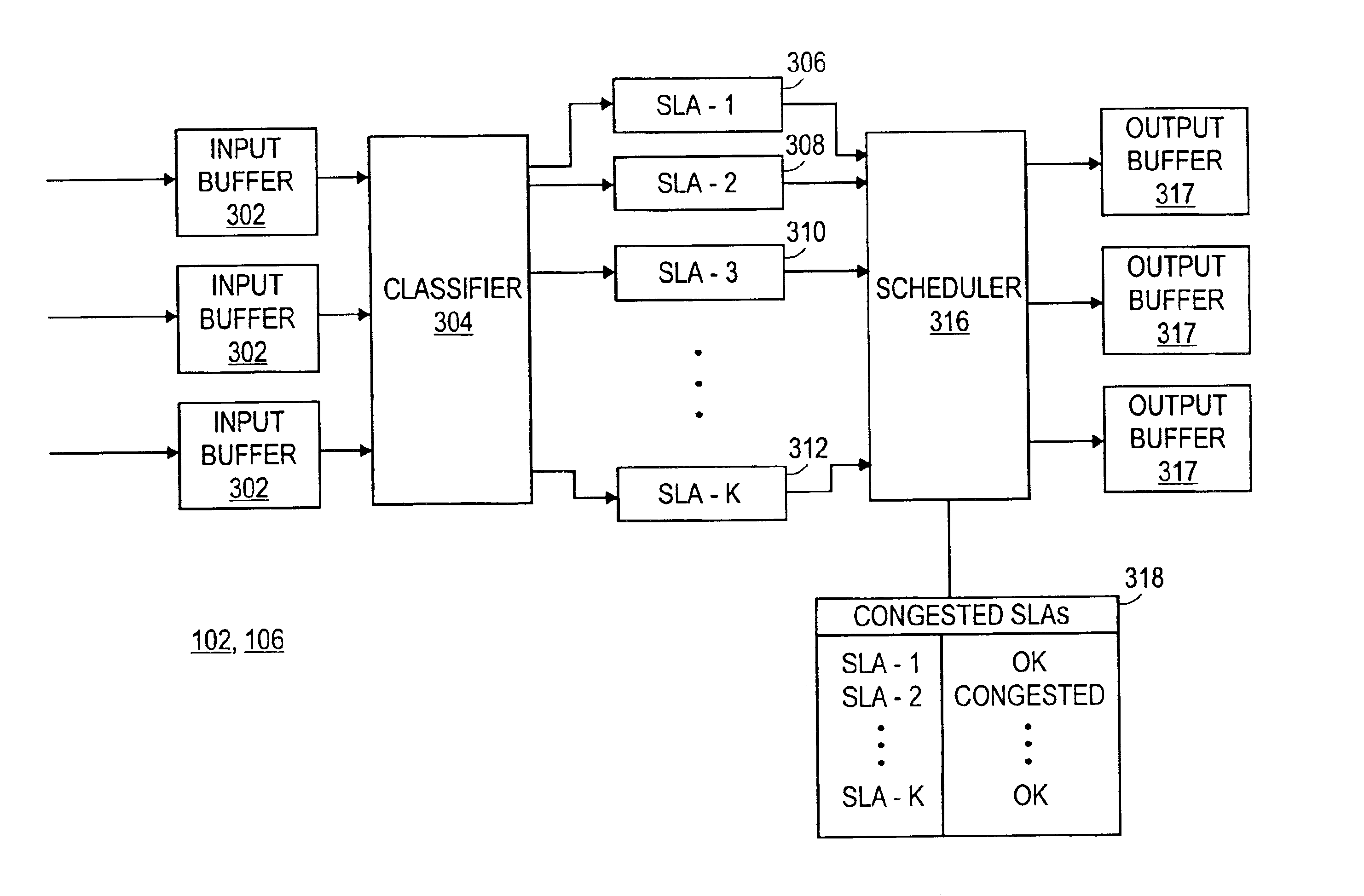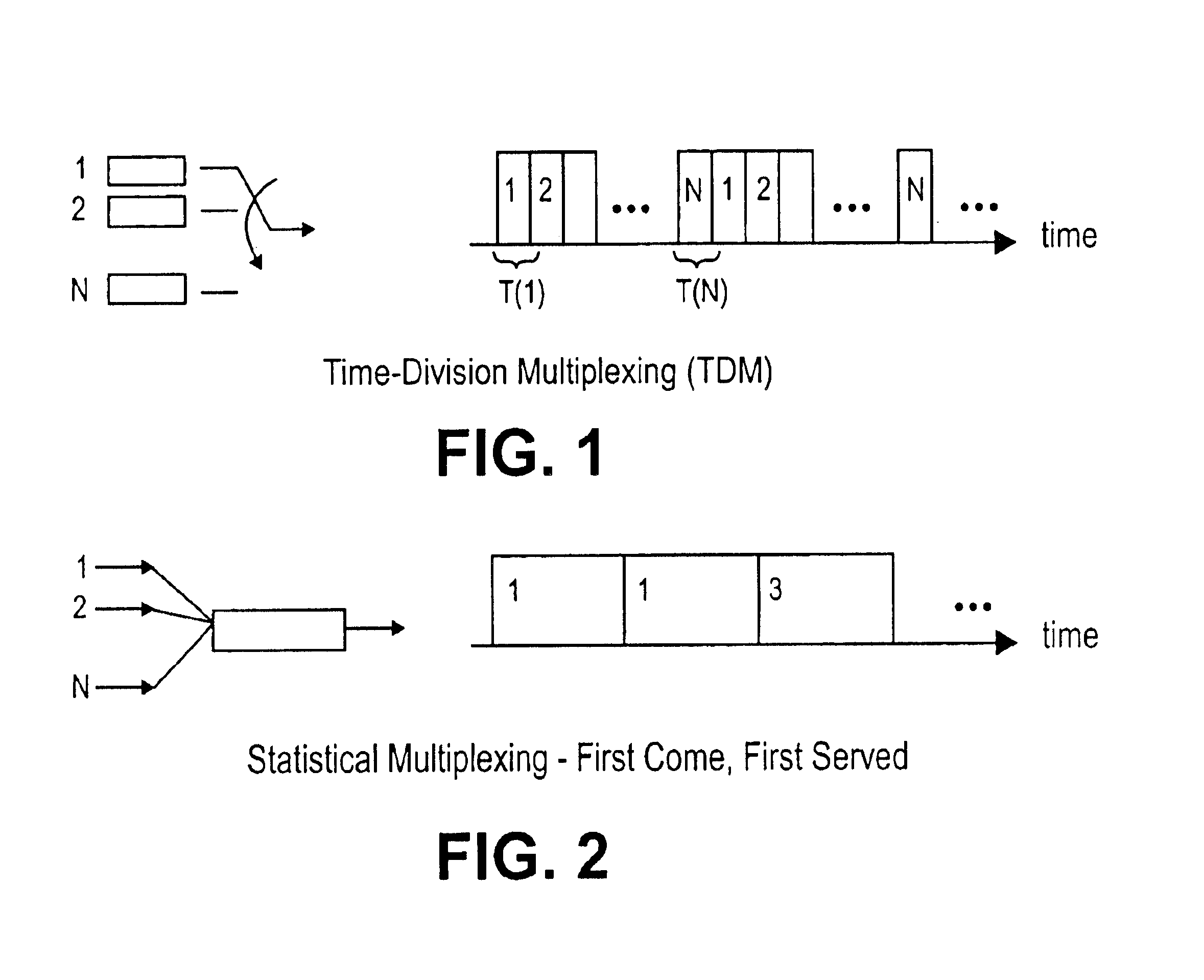Method and apparatus to minimize congestion in a packet switched network
a packet switching and congestion-minimization technology, applied in the field of communication networks, can solve the problems of inefficient utilization of available resources, inability to reduce congestion,
- Summary
- Abstract
- Description
- Claims
- Application Information
AI Technical Summary
Benefits of technology
Problems solved by technology
Method used
Image
Examples
first embodiment
[0047
[0048]A first embodiment of a node 102, 106 is shown in FIG. 6. Upon arrival at a QoS Node 102, 106, packets (e.g., ethernet frames) are placed into an input buffer 302. Subsequently, classifier 304 classifies each packet in accordance with an SLA. To do so, classifier 304 reads at least the source and destination identifier of the packet to be classified, for instance, Layer 2 ethernet frame addresses. The classifier 304 then correlates the pair of identifiers with a corresponding SLA. In one embodiment, such source and destination identifiers are physical addresses, while in other embodiments such source and destination addresses may be composed of other information.
[0049]In addition to source and destination identifiers, other embodiments of the invention may utilize other information for packet classification. For instance, the type of application (e.g., e-mail) from which the packet originated can additionally be used to classify packets with an SLA. Thus, the information ...
second embodiment
[0064
[0065]A second embodiment of a QoS Node 102, 106 is shown in FIG. 8. Rather than having a single queue per SLA, as in FIG. 6, only one queue, an “aggregate queue,” is used for all SLA's in FIG. 8. When packets arrive at a QoS Node from various packet switches, the packets are buffered in input buffers 402. The classifier 404 maintains a single first-in, first-out queue in buffer 406 for all the SLA's. The packets are placed in the buffer 406 in the order of their arrival at the QoS Node. The packets, however, are only placed by classifier 404 into the queue if a scheduler allows such placement. Such a scheduler operates in accordance with a scheduling method referred to herein as “SLA Early Discard,” and represents a new form of statistical multiplexing.
[0066]In accordance with SLA Early Discard, each SLA-k (where k=1, . . . , K) is assigned some integer weight, M(k). When a packet of SLA-k arrives at the QoS Node 102, 106, the packet is accepted into the queue only if the numb...
PUM
 Login to View More
Login to View More Abstract
Description
Claims
Application Information
 Login to View More
Login to View More - R&D
- Intellectual Property
- Life Sciences
- Materials
- Tech Scout
- Unparalleled Data Quality
- Higher Quality Content
- 60% Fewer Hallucinations
Browse by: Latest US Patents, China's latest patents, Technical Efficacy Thesaurus, Application Domain, Technology Topic, Popular Technical Reports.
© 2025 PatSnap. All rights reserved.Legal|Privacy policy|Modern Slavery Act Transparency Statement|Sitemap|About US| Contact US: help@patsnap.com



